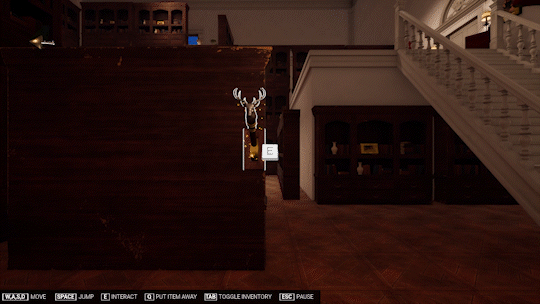
Puzzle Box Palace
Role
Lead Level & Narrative Designer
Game Engine
Unreal Engine 4.23
Platform
PC (Windows)
Development Time
6 Months, 2020
Team Size
12 People (3 Designers)
Puzzle Box Palace Trailer
Screenshots




Roles and Responsibilities
-
Lead Level Designer:
-
Communicating with the Lead Artist, Lead Programmer, Producer, and Game Designer to advocate for design goals and resource needs as Lead Designer.
-
Designed and constructed the Library Level, modified the Parlor Level, and whiteboxed the Main Menu UI.
-
Write, edit, and organize letters from Grandpa character.
-
-
Covid Challenges:
-
Extra challenges were presented due to the Covid-19 outbreak and the team being a partial mix of in studio and remote developers
-
Both verbal and written communication became essential to keep remote teammates up to date on deadlines, goals, and feedback.
-
Narrative Design
-
Worked with the Game Designer to narrow down the narrative goals.
-
Worked on writing the letters that the player collects and reads throughout the game, with the following goals: -
-
each note would provide some subtle hints to the player to solve puzzles
-
insight to what these spaces mean to the player
-
hints to the grandfather character that gave the puzzle box to them.
-
each note was to feel like a part of a single letter that the player’s grandfather wrote before the puzzle box was obtained.
-
correspond to the rooms that they’re found in to make them memorable.
-
Worked with the Game Designer to also make sure that they convey staged grief with subtlety.
-
take the player on an emotional journey that they could relate to and impose their own relationships and fond memories onto this vague, warm grandfather figure that is never met in the game.
-
-
By the end of the experience, we wanted the player to feel like they know this person and embrace the bitter sweet departure from the puzzle box that they worked hard to solve.

Picking up a letter in game
Library Room - Level Design
-
Designed and laid the components in the Library Room to fit the vision of the game.
-
Main goal for the level were to create a space that feels massive, but still simple to parse
-
Second goal, discovered through emergent gameplay, was to give clever players a new traversal method.
-
Third goal was to test players and their collective problem solving abilities.

Library Room in Game
Library Room wireframe views in Editor
(Click on Image to Enlarge)

Library Room in Game
Hub Room - Level Design
-
Reworked the hub rooms as they were initially overwhelming in both size and cognitive player load.
-
Worked with Isaiah Hastings, the Game Designer, to create quick whiteboard iterations of the room layout to shrink the size while also maintaining the design intentions for each space.
-
Main focus of each Hub is to ground the player and teach the new mechanic for each puzzle room.

Hub Room 2 Space in Game

Hub Room Top View in Editor

Hub Room 1 Space in Game
Post Mortem
What Went Well ?
-
Team members kept great communication with the members that needed to be virtual.
-
Problems were tackled right away, which saved a lot of time fixing things that could be problematic down the road.
-
All of the leads communicated with one another and with the entire team in a transparent way that garnered investment into the project.
-
The leads made a point of identifying goals that make things easier for multiple disciplines.
What Went Wrong ?
-
Levels took a long time to be built because we had a small design team and each level had a level of technical difficulty surrounding lighting and movement.
-
Some problems didn’t get addressed until the end of some milestones, which was a problem surrounding the lack of early testing.
What I Learned ?
-
Keep track of what’s been tested and what needs to be looked at as it’s being designed.
-
Consistently update documentation so needed information doesn’t get lost.




